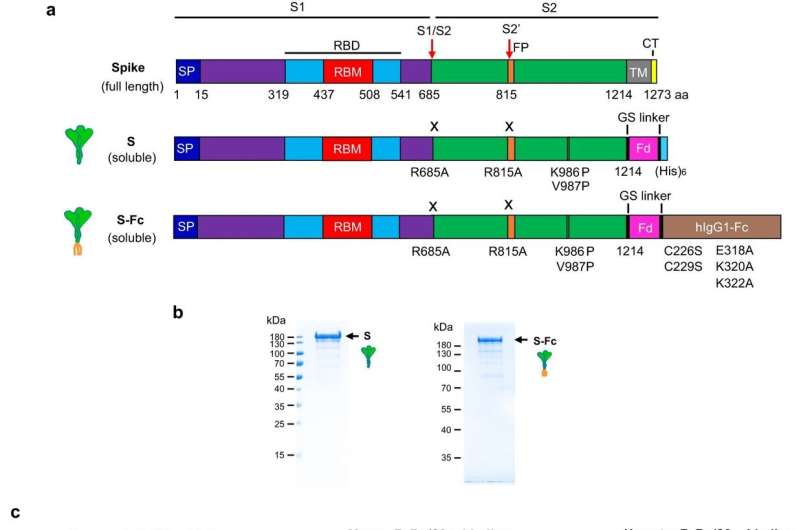This article has been reviewed according to Science X's editorial process and policies. Editors have highlighted the following attributes while ensuring the content's credibility:
fact-checked
peer-reviewed publication
trusted source
proofread
Researchers develop a nasal vaccine that prevents COVID-19 in preclinical studies

A team of University of Maryland researchers developed a nasal spray vaccine that delivers the SARS-CoV-2 spike protein into cells of the airway in mice and hamsters, triggering an immune response that significantly reduced infection and spread of COVID-19. The technology can be adapted to induce immunity to other respiratory illnesses, such as influenza and respiratory syncytial virus (RSV) infections.
A nasal vaccine for respiratory viruses would be a significant improvement over intramuscular shots, because they are less invasive and stop viral particle replication in the airway, before a virus can enter the bloodstream. This could improve the rate of vaccination and reduce the spread of disease.
The development was described in a research paper published in Nature Communications.
"We continue to hear about new variants, and new waves of COVID-19, and to prevent this, we need a vaccine that is easy to administer and can prevent transmission," said Xiaoping Zhu, professor of veterinary medicine at UMD and lead author of the study. "This nasal vaccine prevents virus transmission and can be easily adapted for new variants."
The virus that causes COVID-19 enters the body through the nose or mouth and replicates within epithelial cells, the protective cells that separate the inside body from the outside world. Vaccines that rely on a shot mainly create immunity in the bloodstream, which means the virus must enter the body and replicate in the blood before being detected by the body's immune system. The new nasal vaccine produces immunity in the cells that line the nose, mouth, and throat, preventing the virus from getting that far.
Zhu and his team developed a technology that leverages the body's natural mechanism to transport the COVID-19 spike protein into the cells of the airway, where the local immune system can learn to recognize the virus.
The mechanism they tapped into uses a protein called neonatal Fc receptor (FcRn) to carry antibodies across epithelial cells. The researchers developed and patented a technology to bind their chosen human antibody to FcRn. Then, they attached the spike protein from SARS-CoV-2 to FcRn and sprayed it into the noses of mice.
The team then exposed the mice to ancient SARS-CoV-2, delta, and omicron variants of COVID-19. All unvaccinated mice exposed to the Delta variant died, while most vaccinated mice (83-100%) survived. Although mice exposed to major omicron variants survived, the researchers found significantly reduced inflammation and virus loads in vaccinated mice compared to unvaccinated mice.
Comparing results in mice that had the Spike protein delivered by nasal vaccine, versus injection, the researchers found that the nasal vaccine triggered a significantly more potent immune response in the airway and lungs. Consequently, the researchers also found that the nasal vaccine, but not the intramuscular vaccine, dramatically reduced SARS-CoV-2 airborne transmission.
This result is essential as inhalation represents a major transmission route for COVID-19, and airborne virus particles have the potential to linger in the air for up to 9 to 12 hours.
Due to the emergence of new variants, COVID-19 cases and hospitalizations are now ticking up again. While the updated mRNA vaccines remain effective at preventing severe illness and death, they may not be as effective in reducing infection and transmission over time. To overcome this gap, the U.S. government initiative called Project NextGen seeks to develop an effective and safe nasal vaccine for controlling the spread of variants. According to Zhu, the nasal vaccine he and his team developed meets all the criteria of Project NextGen.
More information: Weizhong Li et al, An FcRn-targeted mucosal vaccine against SARS-CoV-2 infection and transmission, Nature Communications (2023). DOI: 10.1038/s41467-023-42796-0




















